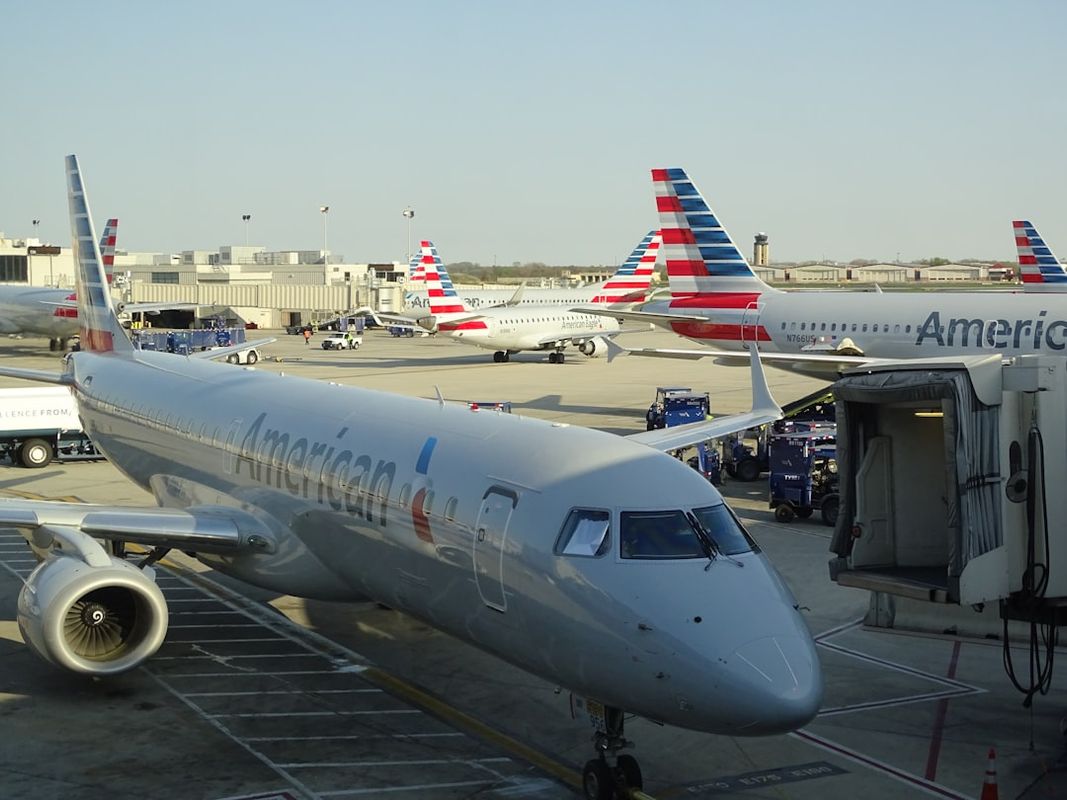(KANSAS CITY, MISSOURI) An American Airlines flight carrying four members of Congress made an unplanned stop in Kansas City on Tuesday evening after a disruptive passenger incident led the crew to divert mid-route. The flight, American Airlines 1218, was traveling from Phoenix to Washington National Airport and landed at Kansas City International Airport around 6:15 p.m. local time, roughly two hours and forty-one minutes into the trip. The airline said the decision was made for safety, and local police boarded the aircraft and removed the passenger without injuries or further disturbance.
Who was on board and why it mattered
Onboard the Airbus A321neo, tail number N449AN, were Rep. Greg Stanton (Democrat, Arizona) and three Republicans from Arizona: Reps. Crane, Biggs, and Gosar. They were returning to Washington for a key vote on a continuing resolution to reopen the federal government after a shutdown fight.

Passengers reported that a man shouted about the United States being a “fascist state,” prompting crew action and, ultimately, the diversion to Kansas City. Authorities did not release the passenger’s identity or any additional details about the removal.
“Emergency stop in Kansas City to remove [a] disruptive passenger,” Rep. Greg Stanton later posted on social media, thanking Kansas City police for their professional handling of the situation.
His post matched the timeline confirmed by the airline and aligned with accounts from others on board. The statements helped calm speculation as news of the diversion spread quickly among staff, families, and fellow lawmakers awaiting the delegation’s arrival in Washington.
Airline response and timeline
American Airlines confirmed the crew diverted out of an abundance of caution and emphasized that the matter was handled professionally. Key points:
- The airline did not provide further specifics about what triggered the crew’s decision beyond reports that the man shouted about a “fascist state.”
- No injuries were reported.
- After police removed the individual and the aircraft was cleared, the same plane continued to Washington, arriving one hour and eighteen minutes behind schedule.
- Lawmakers said the delayed arrival still allowed them to continue their travel plans for the vote.
What passengers and witnesses reported
Fellow passengers described a swift, orderly removal in Kansas City:
- Authorities boarded and escorted the person off the aircraft while the rest of the cabin remained seated.
- Cabin crew kept communication clear and firm while coordinating with the cockpit.
- Kansas City police met the aircraft at the gate and escorted the individual off without further disturbance.
- After removal, the cabin crew resumed normal service and updates, tension eased, and many passengers contacted family or staff to realign plans.
Witnesses said the sequence was consistent with standard airline procedures: crews identify disruptive behavior, alert dispatch and authorities, and land at a suitable airport to resolve the situation quickly.
Operational continuity and aircraft details
The aircraft—Airbus A321neo, N449AN—remained in service for the rest of the journey. Keeping the same plane reduced further disruption and made it easier for congressional travelers and staff to update schedules en route.
- Flight trackers later showed the aircraft’s path through Kansas City to Washington National, ending with the late arrival but without further complications.
- The quick turnaround and operational continuity were notable given the day’s political stakes and the presence of public officials onboard.
Context: political stakes and broader impact
The timing underscored the political stakes for travelers on American Airlines 1218. The Arizona Republicans on the flight have advocated ending the shutdown by passing the Republican continuing resolution. Their return to Washington was part of a broader push among lawmakers to be present for the vote.
- Several members of Congress had already shifted travel plans due to the shutdown’s ripple effects.
- The diversion added another layer of uncertainty to a tense day on Capitol Hill.
- For the hundreds of people using that route daily, including congressional travelers, the outcome—no injuries, a single diversion, and a resumption of service—offered reassurance during a week of heightened political pressure and travel stress.
Procedures, training, and official guidance
Airlines and airports train for these scenarios, and Kansas City’s quick response matched what travelers observed onboard American Airlines 1218. While officials shared limited information, the presence of local law enforcement and the airline’s measured tone suggested a straightforward security response rather than a prolonged investigation at the gate.
- VisaVerge.com analysis noted that airline crews rely on established procedures to handle disruptive passengers, with diversions to airports like Kansas City aiming to resolve incidents quickly so flights can continue with minimal delay.
For official information about passenger conduct and airline procedures, see the Federal Aviation Administration’s passenger resources at: FAA passenger conduct guidance.
Takeaway
The incident highlighted how quickly a single outburst can change a flight’s course—even when elected officials are onboard. Still, the handling of American Airlines 1218—from the crew’s decision to land in Kansas City to the police removal and the flight’s continuation—demonstrated a clear, calm process.
- By night’s end, passengers arrived at Washington National with schedules dented but not derailed.
- The focus promptly returned to the work that had pulled them east in the first place.
This Article in a Nutshell
American Airlines Flight 1218, an Airbus A321neo (N449AN) from Phoenix to Washington, diverted to Kansas City after a passenger shouted about the U.S. being a “fascist state.” The aircraft landed around 6:15 p.m.; Kansas City police boarded and removed the person without injuries. The same plane continued to Washington, arriving about 1 hour 18 minutes late. Four members of Congress were on board returning for a crucial continuing-resolution vote; operations and safety procedures proceeded as expected.













